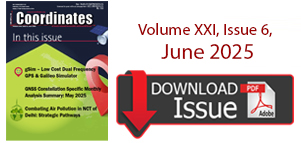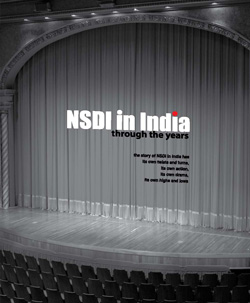The Certification Center Svyaz-Certificate in Russia is now using the R&S CMW500 to certify ERA-GLONASS systems in line with the TR CU 018/2011 technical guideline.
DAT/EM Systems International and Icaros, Inc. has announced the release of a collaborative software solution that processes and analyzes Unmanned Aerial Systems (UAS) data.
Air Navigation Services (ANS) directorate of Airports Authority of India (AAI), has been awarded the prestigious ‘Golden Peacock Award for Innovative
DAT/EM Systems International® released the 7.1 edition of DAT/EM software products including Summit Evolution™, Landscape™, Capture™, MapEditor™, Ortho+Mosaic™, Airfield3D™ and Contour Creator™. The advancements in the 7.1 DAT/EM Photogrammetric Suite represent the latest evolution in technology and are based on customer input and growth within the geospatial industry. datem.com/release7-1
Ordnance Survey is teaming up with the Satellite Applications Catapult, an independent technology and innovation company, on the GEMNet project to understand the nature and extent of interference on GNSS…
There is a reason for the fuss about formulating a policy for the use of Unmanned Aerial Vehicles (UAV)/ Unmanned Aircraft Systems (UAS) or as they are called today, Remotely Piloted Aircraft Systems (RPAS). In this article, we piece together the main issues involved in…
This is the initial result of a three-year project to monitor marine and island environmental resources using remote sensing technology which was approved in Hanoi on November 13. According to Nguyen Xuan Lam, head of the National Remote Sensing Department…












 (5.00 out of 5)
(5.00 out of 5)